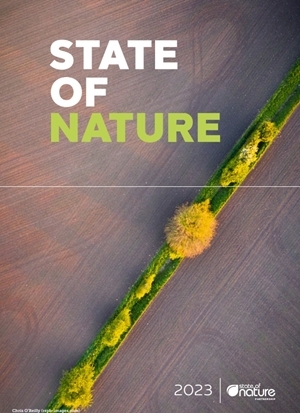By Dr. Alastair Leake, GWCT Director of Policy & Allerton Project
There’s no denying that the latest State of Nature Report makes for sober and concerning reading. However, neither we, or nature have time for us to mourn the past. We must focus on what works.

Above all, the document acknowledges what the GWCT has recognised for decades - that if we are to reverse biodiversity decline, mitigate climate change and improve the health of our rivers, we will not be able to achieve it through the 8% managed as nature reserves alone, it will need the commitment and expertise of the farmers and game managers who manage 72% of the land.
There are plenty of cases where through targeted interventions and collaboration, these private land managers have bucked the downward trends logged in the report. For example, after monitoring lapwing decline in the Avon Valley, the GWCT launched the Waders For Real Project in 2015. Our ecologists and advisors began working with farmers and game managers on a landscape scale to further improve habitat and protect the remaining birds.
The decline was successfully reversed and by 2022 the number of pairs in the study area had doubled. In our uplands, Defra’s Hen Harrier Action Plan has helped the number of nests rise from zero to 54 in a decade, resulting in 141 fledged chicks this year – a record number.
Many of the measures employed in achieving the recovery of red-listed species have their roots in game management, a fact demonstrated at the GWCT’s Allerton Project which showed that when the three-legged stool of game management (i.e. habitat provision, year-round availability of food and predation management) was withdrawn, farmland bird numbers fell by over 90%.
Equally, when the best practice principles of game management were reapplied, songbirds doubled again. In the context of a continuing dramatic decline in national farmland bird populations highlighted in the report, we must ensure these practices are more widely adopted and supported.
We agree with the report’s assertion that ‘nature-friendly farming needs to be implemented at a much wider scale to halt and reverse the decline in farmland nature’, and it’s heartening to read that over 20% of available agricultural land is in agri-environment schemes.
However, if such impressive results, such as those described above, are to be achieved on the scale needed to reverse national declines, the new Countryside Stewardship Plus schemes must be properly incentivised and have the kind of flexibility and choice built into the new lower-level Sustainable Farming Incentive (SFI).
There is an urgency to deliver both the improved higher-level agreements and the SFI in order to avoid a funding gap when subsidies disappear, forcing farms out of business. Moreover, the uncertainty created by the recent stalling of the legislative framework for offset agreements risks acting as a drag on the pioneers in farmer clusters such as the Environmental Farmers Groups who are leading the way in developing biodiversity-positive farming.
With the right incentives these large-scale farmer-led cooperatives have the potential to deliver a better state of nature for all – delivering exactly what the State of Nature report says is needed.